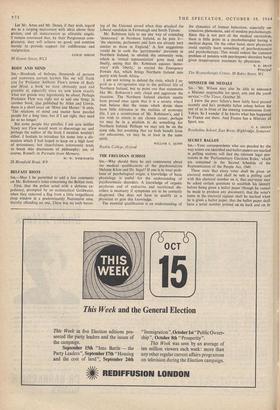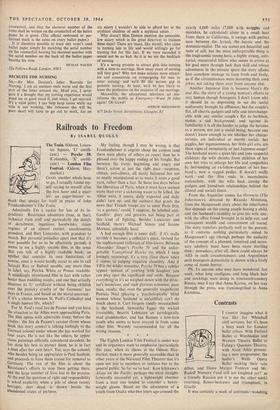SECRET BALLOT SIR,—Your correspondents who are puzzled by the way
voters are identified and ballot papers are marked in polling stations will find the relevant legal pro- visions in the 'Parliamentary Elections Rules,' which are contained in the Second Schedule of the Representation of the People Act, 1949.
These state that every voter shall be given an electoral number and shall be sent a polling card with this electoral number on it, that any•voter may be asked certain questions to establish his identity before being given a ballot paper (though he cannot be made to produce any document), that the voter's name in the electoral register shall be marked when he is given a ballot paper, that the ballot paper shall have a serial number printed on its back and on its
counterfoil, and that the electoral number of the voter shall be written on the counterfoil of the ballot Paper he is given. (The official embossed or per- forated mark is the same on every ballot paper.) It is therefore possible to trace any voter's used ballot paper simply by matching the serial number on the counterfoil bearing his electoral number with the serial number on the back of the ballot paper bearing his vote.
32a Fellows Road, London, NW3
NICOLAS WALTER



































 Previous page
Previous page